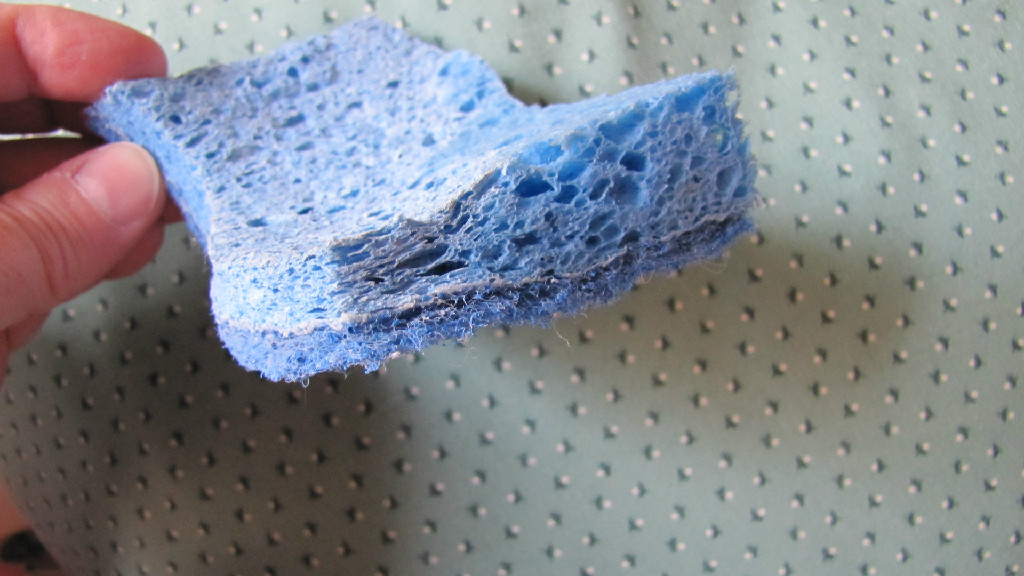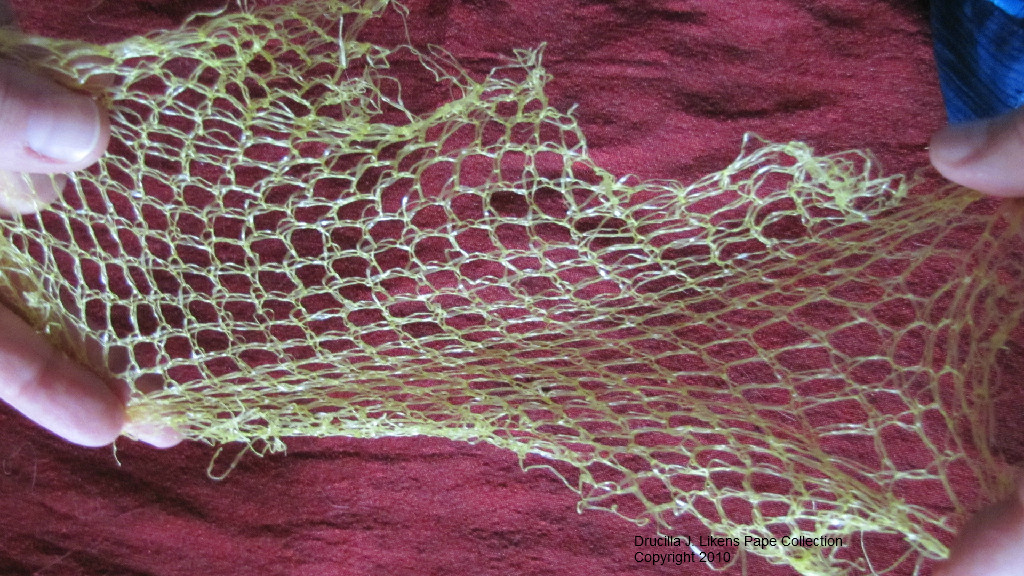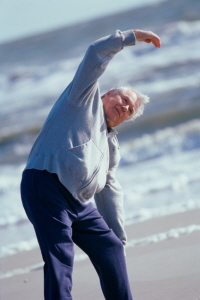What is Myofascial Release?
Q:
What is Fascia?
A:
The fascia of the body is similar to the “fascia” of this pumpkin: The “fascia” of the pumpkin is organized three-dimensionally and without interruption throughout the “body” of the pumpkin.

Mucopolysaccharide ground substance is a fluid gel composed of mucus, sugar, protein, and is the immediate environment within and surrounding every cell of the body. Fascia is actually made up of basically three things:
- Mucopolysaccharide “ground substance”; “muco” = mucous, for lubrication of fibers; “polysaccharide” = many sugars, for cellular energy
- Collagen Fibers which give strength, form, and shape
- Elastin Fibers or,”elastic” fibers, which have memory (like a rubber band…these fibers can stretch out to any length, yet return to their original shape.)
So, fascia is a tissue that surrounds, supports, protects, divides, infuses with, facilitates the intake of nourishment and the excretion of waste, has memory, is resilient, is uninterrupted head to toe, and is a superhighway of information ……pretty important tissue, yes?!!!
Q:
What is a Myofascial Restriction?
A:
Ideally, fascia is very fluid in its healthy state. (Think of the resilience of a sponge, full of water, or a bowl of wiggly jello).

When prolonged inflammation occurs, the ground substance of the fascia begins to dry out (think of the same sponge, bone dry and curled at the edges, or the bowl of jello, left uncovered and drying out overnight!). The collagen fibers begin to thicken and shorten, “knitting” themselves together by laying down fiber after reinforceing fiber (think of repairing a crocheted piece by bunching and sewing….bunching and sewing…until you have a knot of thread and yarn that is almost impossible to pull apart, or cut). The elastin fibers become trapped and shortened within the collagen fiber knots, and can no longer expand and contract. This is how myofascial restrictions are formed, including the toughest of them all….scar tissue.

(above) represents tissue that is spacious and flexible
vs.
(below) represents scar tissue, which is thick and difficult to manipulate

You would not be able to forcefully pull the knot of thread and yarn apart…it would just tighten even more…unless you carefully worked the knot three-dimensionally by carefully and gently loosening the threads and yarn much the same as the gentle pressure and elongation of the tissue, or fascia, eventually lengthens and softens the restrictions. Applying gentle compression and/or stretch over time is the principle for performing myofascial release.

Q:
How do Myofascial Restrictions Occur?
A:
Over time your body has developed its own unique pattern of combined “kinks” and “quirks”, or myofascial restrictions. Perhaps you’ve had a recent injury, or diagnosis which has been the “straw that broke the camel’s back”, and has moved you to take action to relieve your pain and re-examine your health.
Our bodies respond to immediate traumatic events (illness, injury, surgery, shock) by mounting an inflammatory response. This inflammatory response is meant to be short term in duration. However, prolonged inflammatory response (emotional stress, repeated or untreated physical injury, prolonged patterns of poor posture) tends to be cumulative, and results in myofascial restrictions. These myofascial restrictions are often experienced as “symptoms”, such as illness (fibromyalgia, chronic fatigue syndrome), chronic pain (headache, TMJ, neck/back/leg pain, pelvic inflammatory disease, etc.), or other conditions such as restless leg syndrome, carpal tunnel syndrome, plantar fascitis, vertigo, tinnitus, among many.
Q:
How does the Fascia "Release?"
A:
Myofascial Release addresses these fascial restrictions using gentle, sustained pressure into the tissue over time, which helps to re-liquify the ground substance, restore elasticity, flexibility, strength and health to the tissues, or fascia….down to the cellular level! Sustained pressure into the tissue helps to soften the ground substance (think how your hand would melt jello). Sustained stretch of the tissue is gently applied to elongate collagen and elastin fibers (think of a rope slowly unravelling). At times, sustained compression is also used to facilitate more resistant areas to soften (think of the old wooden screen door…you could pull, pull, pull..and it would not open…but give it a little nudge, and it would spring open!). The compression gives that little “nudge” to “stubborn” areas.

Q:
How does the MFR Therapist Evaluate & Treat Pain?
A:
Myofascial Release is very practical. The MFR Therapist is trained to use observation, palpation, active listening, all senses when evaluating and treating a patient. For example: Perhaps the “patient” (skeleton with “fascial restrictions” pictured below), slipped and fell, causing an injury to the low back and hip.

©MFR Seminars
to the patient, paying particular attention as the patient is stating seemingly unrelated symptoms such as migraine, shoulder pain, shortness of breath, sacroiliac joint pain and plantar fascitis.
in standing, observing and palpating structural alignment, tissue glide/thickness, range of motion, posture and mobility. In this case, noting that the right hip, ribcage and shoulder are “glued” together. Also, the left shoulder and head/neck are “glued” together, as are the lower left hip and leg. The arms and legs are uneven, with tightness of the medial thigh. Ideally, the hips and shoulders should be level, arms and legs should be even, and spine should be straight. The MFR Therapist will also note that some of the tissues (fascia) feel tight, are painful when touched, and limit the patient’s ability to move freely.
…..in this case, the injury to the low back caused the fascia to tighten, shorten and thicken, pulling the hip bones, spine, shoulders and arms/legs out of alignment.
how the fascial restrictions are related to the patient’s symptoms. For example, tightness between the fascia of the head/neck may be causing the migraines. Fascial restrictions pulling into the neck/shoulder may be causing the shoulder pain. Fascial restrictions adhering the spine and ribcage together may be causing the shortness of breath. Fascial restrictions between the hip/spine may be causing back and sacroiliac joint pain. Fascial restrictions between the hip/leg may be pulling into the foot causing plantar fascitis.
By releasing the fascial restrictions, the bones can then naturally drift back into alignment, and the (up to 2000 lbs. per square inch) pressures will be taken off of the tissues of the head/neck (goodbye migraine) and shoulders (goodbye shoulder pain) as well as ribcage (goodbye shortness of breath) hip and spine (goodbye lower back and sacroiliac joint pain) and hip/leg (goodbye plantar fascitis).
how to use the basic practical principles of Myofascial release to self treat for health and well-being for a lifetime!
Q:
How does MFR compare to other therapies?
A:
Myofacial release addresses the health and functional ability of the fascial system, an incredible 3-dimentional network of tissue which connects the body, head to toe, three-dimensionally. Working with this expansive, integral system of the body makes actual permanent changes toward vastly improved posture, alignment and function, down to the cellular level. These changes tend to “hold” as they occur, so that as you continue to receive MFR treatment, you will feel the progressive positive changes in your body. You will also feel yourself becoming increasingly proficient in your ability to self treat.



Should you choose to participate in other forms of therapy, MFR actually enables your body to better receive and benefit from other types of therapy (such as chiropractic, physical therapy, massage, acupuncture, energy work, healing touch, etc). It also greatly enhances your ability to perform and benefit from many forms of exercise such as Yoga, Tai Chi, aerobics, weight training and sports.
